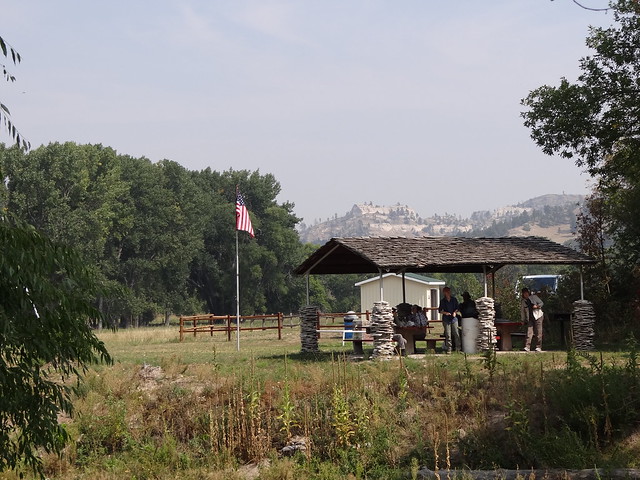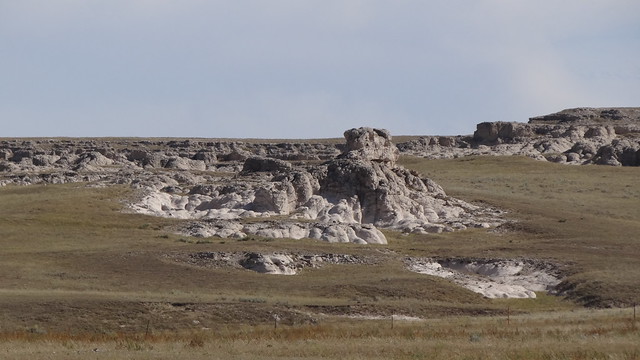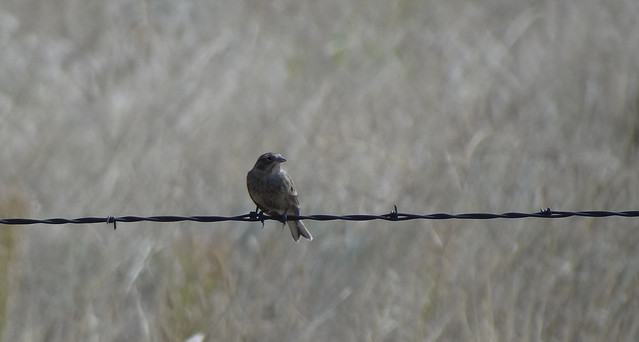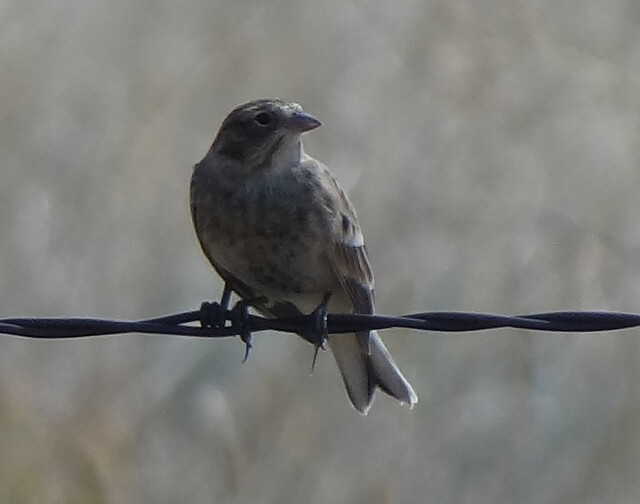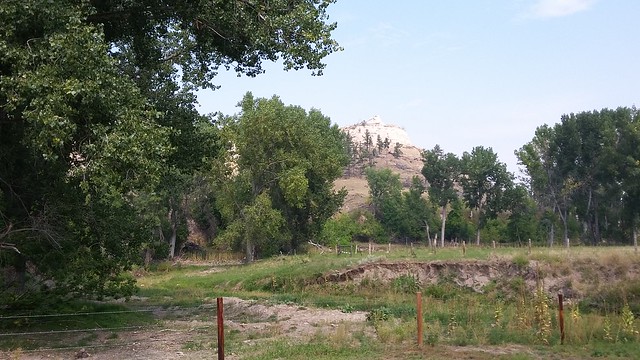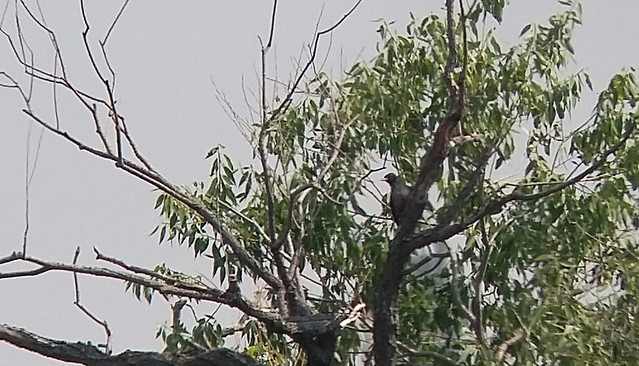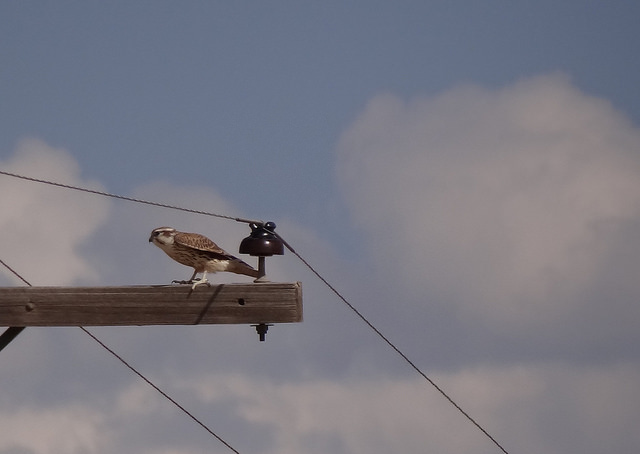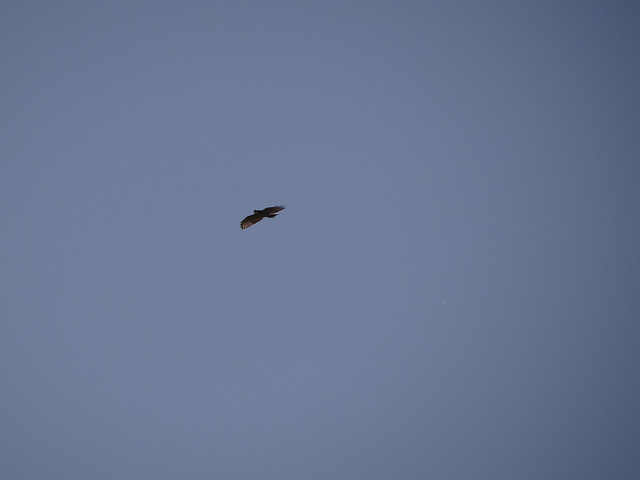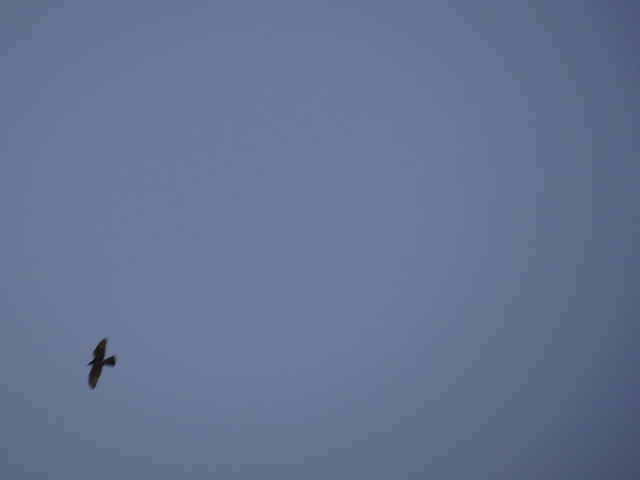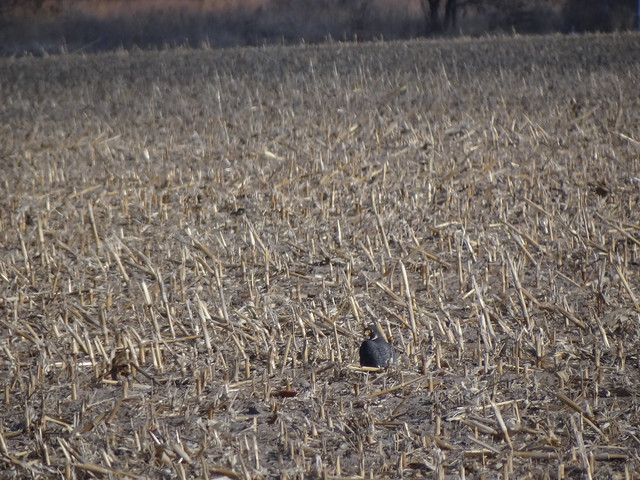You can’t get any farther west than we did today and not be in Wyoming. We left Scottsbluff after a somewhat more leisurely breakfast than hoped, then turned north to bird the little bit of terrestrial heaven that is the Henry Road.
Much of the time, dust and traffic kept us in the vehicle, which proved a good blind for watching the hundreds of horned larks and vesper sparrows on the roadside. I’d expected good longspur watching here, but we saw only small numbers — fewer than ten McCown’s, a few more than ten chestnut-collareds.
After playing a fluttery flittery game of hard-to-get, one of the little flocks of chestnut-collareds deigned to start feeding on the road in front of us; a little patience let us walk up on them for outstanding scope views of a bird that is almost always skittish and hard to see on the ground. At one point, we had a McCown’s and a chestnut-collared longspur perched nearly alula to alula on the fence, a comparison that I always find informative.
Plus, you could really see those long spurs.
Almost as captivating was the first ferruginous hawk for the trip, a splendid light bird turning circles low over the short grass as, some 60 miles from leaving our hotel, we approached pavement again. This bird, flashing white tail and wing bands, ran away with the prize for day’s best raptor, handily beating out the two prairie falcons and the golden eagle we would see later on.
We moved on to one of the great sites in Nebraska birding and ornithological history, Sowbelly Canyon.
On the way down to a quick picnic at Coffee Park, we stopped to watch three pink-sided juncos, newly arrived from the breeding grounds to the northwest. Coffee Park itself was unusually quiet, with just downy and hairy woodpeckers, spotted towhees, and a wood duck to break the stillness. So we drove a little ways down the road to take advantage of the inside scoop Alice, Kathy, and Lee had given us over supper last night. A few flickers, a couple of red-headed woodpeckers, a flock or two of pine siskins, and then the scanning of the treetops paid off.
Lewis’s woodpeckers aren’t common in Nebraska, but lower Sowbelly has been a fairly reliable site for a while now. This bird — barely visible in my phonescoped image, I’m afraid — was taking it easy in the mid-afternoon warmth, swooping out only once while we watched, otherwise keeping to its inconspicuous and rather distant perch high in a willow. Not only was this a life bird for some of the group, it was the number-one target species for at least one of us. Tick!
We needed to make it to Chadron to check in to our hotel and to find some supper, so we pressed on from Sowbelly to the icehouse ponds at Fort Robinson, site of many a fine birding afternoon. It looked pretty bleak at first: an eastern phoebe, a couple of wood ducks, some barn swallows. On the way out, though, we heard chickadees, and soon were watching a small mixed flock of black-capped chickadees, orange-crowned and Wilson’s warblers, and a latish yellow warbler working the willows and boxelders.
A song sparrow in the brush lining Soldier Creek was a bonus; the default Melospiza sparrow on passage here is the Lincoln’s, a species we haven’t picked up yet but expect to see tomorrow, when we get to spend more time on the Pine Ridge (and less time in the van!). Weather willing, we’re planning on making a pre-dawn run for poorwills. Wish us caprimulgid luck.

